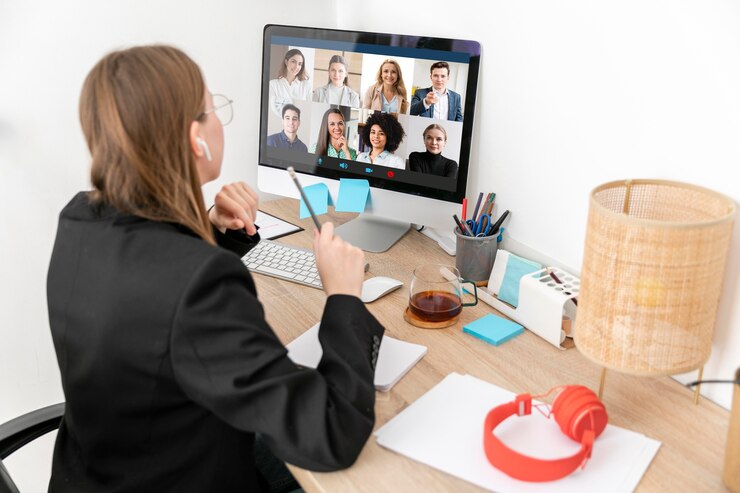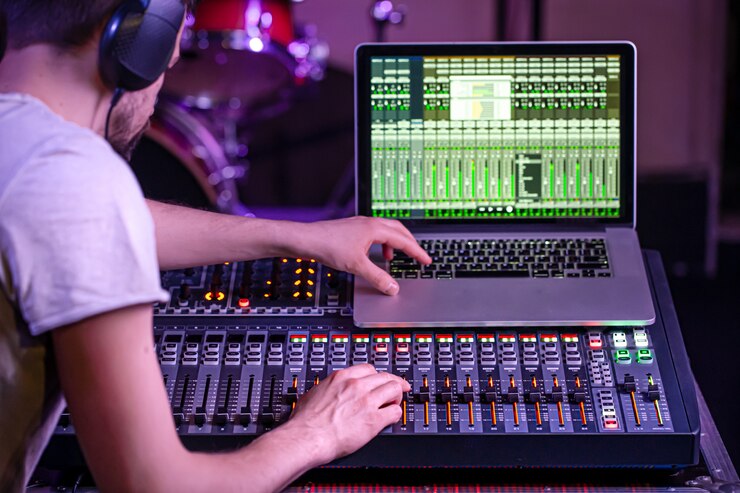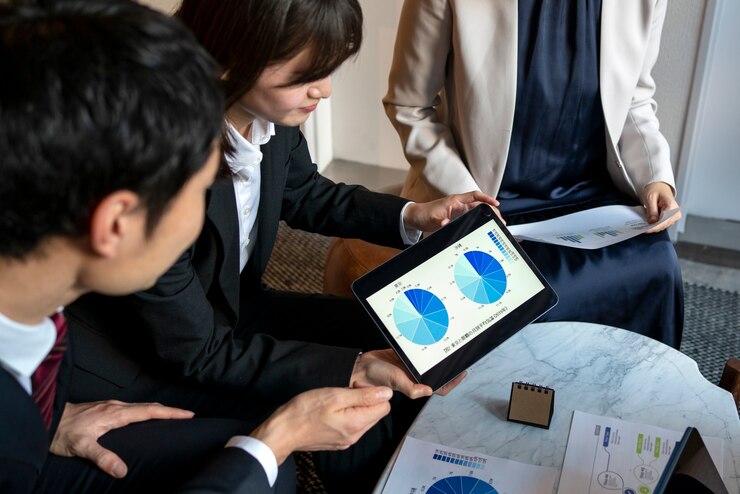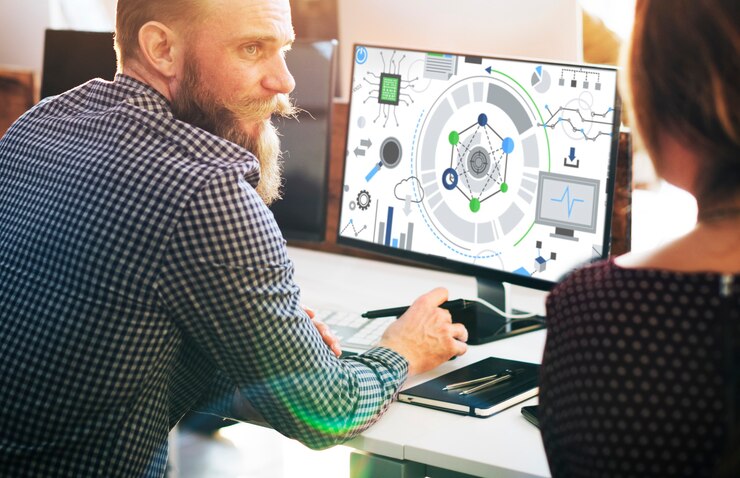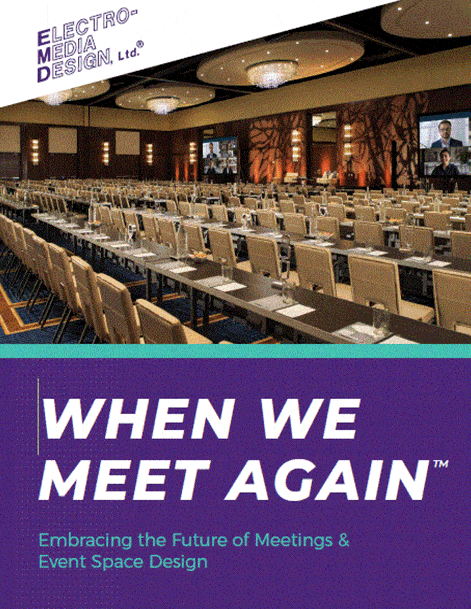By using our website, you agree to the use of cookies as described in our Cookie Policy
A Major Shift is Happening in the Meetings Industry
The Coronavirus pandemic has disrupted countless aspects of life and business — and its impact on the business of meetings is a case in point. The situation is highly dynamic, and the response of health officials continues to evolve as more is learned about the transmission of the disease and effective ways to control its spread. No one can dispute that the meetings industry has changed over the course of the pandemic and will continue to evolve. Knowing which changes are temporary and which are permanent will help venues with meeting facilities better plan and adapt to market needs and come out stronger and more focused on the other side. In any case, the changes will continue to evolve, requiring continuous monitoring and flexibility from all parties involved.
Temporary Changes
Among the short-term impacts (at least, until COVID-19 vaccines are widely distributed):
- Social distancing guidelines. While the 6-foot distancing guideline is shifting across the country, the guidance may continue to evolve based on various unknown factors. In any case, the guidelines will continue to have a direct bearing on the size of rooms required to accommodate meetings. An additional complication is that meeting attendees will self-select into trusted small groups of coworkers, family members, friends, etc. who will choose to sit together, just like in restaurants. Meeting room seating arrangements will need to anticipate and accommodate this trend.
- Group size limits. A separate but related issue is that of regulations and guidelines limiting the size of groups that can gather indoors. Suffice it to say that there is a wide range of variation in group size limits from state to state. Estimates (the optimistic ones) we are hearing from pundits in the event production, hotel, and meeting planning industries put groups of 500+ returning by the summer of 2021 at the earliest. That being said, some huge convention facilities like Las Vegas may accept larger groups sooner.
- Mandated masking. The intensity of this concern will fade as the threat posed by COVID-19 is reduced through medical science and other factors. In the meantime, though, there are unintended consequences. Some types of masks, for example, make it hard to understand what the speaker is saying by absorbing the sound of the speaker’s voice. Until vaccines have been administered to a substantial portion of the population, this will present a significant ongoing challenge in the meeting industry.
- Plans for a “soft re-start” and smaller meetings. With nearly every scheduled inperson conference and meeting effectively pushed to late 2021 at the earliest, both the organizations that meet and the venues that accommodate them are making tentative plans. Many hotels and meeting spaces are working on the assumption that groups will opt for smaller regional meetings instead of larger national meetings.
At the same time, the process of working through the technology challenges of hosting hybrid meetings — those that include both in-person and remote attendees — may take some time, but the constraints will ultimately be relaxed.
Permanent, Ongoing Changes
- A new, mixed meeting landscape. A mix of smaller regional meetings and large meetings will prove effective and will eventually become the new normal. Through the use of unified communications and collaboration (UCC) technology, smaller regional meetings will be more effectively interconnected and interactive.
- There will be a continuing demand for meetings that people can attend either inperson or remotely. The reasons people have to NOT attend meetings in person will evolve over time. Today and in the near future, these reasons include group size limits, personal safety, travel concerns, and venue capacity issues. But as we learn how to design and host meetings that can better accommodate remote attendees, the decision about whether to attend in person or virtually will remain an option. As a result, venues that can more effectively use UCC technology to support hybrid models will be better positioned for success. Even as larger meetings come back, we expect that there will be a demand for other approaches that offer a “High-Tech, Low-Touch” experience for attendees. Rather than relying on portable equipment that has been handled many times by who-knows-who, the preference will be for clean, easy-to-use, built-in high-tech systems.
- The rental/outsourcing business model for AV and event technologies* will be radically different. This part of the meetings ecosystem has already been affected, and the demand for hybrid meetings will drive even more changes in how AV rental business operate. The use and sanitation of portable equipment, combined with temporary staff, will increase costs dramatically and cause management teams to consider built-in technology with self-operating and managed services models.
- Corporate space and work-from-home. Another factor will be the preferences of users in the corporate world, and the companies where they work. Some employees who have been working from home during the pandemic will continue to do so, yet will also have the need to meet with groups of associates who are in the office. Some of their colleagues, meanwhile, will be returning to the office, while still others will seek alternate work settings. To accommodate all these types of users, offering hybrid meeting capabilities is an effective solution.
- Built-in & Integrated vs: Temporary Technology. In a related development, many hotels and other venues are rethinking their use of portable AV equipment, and instead considering built-in systems that provide an enhanced solution in terms of acoustics, aesthetics, performance, and access. Shifting to built-in systems can help hotels and other spaces improve the guest experience, control costs, and better support their venues’ brand.
- Accommodating attendees’ personal tech. Another permanent change will be the deeper integration of the technology devices that attendees bring with them. Personal devices will be increasingly leveraged for interactivity and control purposes — and venues will have an opportunity to meet guests’ needs as part of the High-Tech, Low-Touch shift.
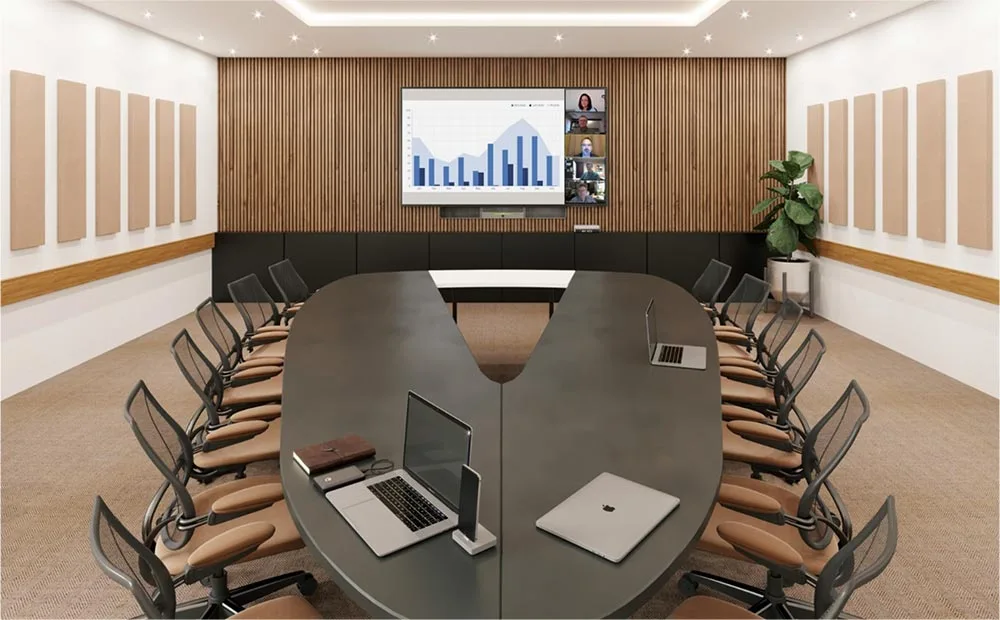
Seeing a Bigger Picture
It’s clear that the Coronavirus pandemic has profoundly disrupted not only the business of meetings, but also that of the hotel AV industry. Likewise, these changes are reverberating beyond hotels to include conference centers, corporate settings, and even institutional and educational facilities. In a sense, the pandemic has acted as an industry-wide reset button, providing a unique and strategic opportunity for hotels, conference centers, institutions, and corporate facilities ... in other words, any venue that hosts meetings. For those venues that act decisively, the “pandemic pause” represents an opportunity to establish themselves as providers of a new meeting model that better meets guest expectations — and is easier and more profitable to operate. This unforeseen crisis is forcing all of us to make a quantum leap into the future of meetings and event technologies. In short, there’s no going back to the old way of offering meeting space — and that’s a GOOD thing.
Embracing the future of Meetings and Event Space Design

In this guide, we discuss how the sudden shift in the meetings and events industry has introduced a new meeting model for the future.
Additional Resources
How Electro-Media Design Can Help
As leaders in both the hospitality and audiovisual industries, EMD offers a full range of event and entertainment systems design and acoustical consultation with expertise in audio, video, control, and related presentation, entertainment, and communications technologies. ElectroMedia Design does not sell, install or receive compensation from product manufacturers. We are your independent advocate.
For more information, please visit www.electro-media.com.
We are offering a free one-hour consultation to discuss any questions or projects you would like to discuss. Book your free one-hour consultation through calendly.
Thank you very much for your interest, you also can reach us at (301) 355-5050
 Author: Jeff Loether, ISHC, Founder and President. Jeff established ELECTRO- MEDIA DESIGN, Ltd. in 1990. He has overseen the production of hundreds of designs created by EMD's Audiovisual (AV) engineers. Jeff is active in the development of new products and design approaches that incorporate different technologies to enhance functionality, reduce system complexity and cost, and improve reliability. Jeff’s experience and knowledge in the hospitality industry is unparalleled and he has pioneered many of the standards of AV design and implementation. Jeff is an active speaker and instructor for a number of professional organizations, including the ICIA, IACC and NSCA. He is a published author, with articles appearing in a variety of industry related magazines, including Sound & Video Contractor. He is a founding member of the International Communications Industry Association’s (ICIA) Independent Consultants in Audiovisual Technology Council (ICAT).
Author: Jeff Loether, ISHC, Founder and President. Jeff established ELECTRO- MEDIA DESIGN, Ltd. in 1990. He has overseen the production of hundreds of designs created by EMD's Audiovisual (AV) engineers. Jeff is active in the development of new products and design approaches that incorporate different technologies to enhance functionality, reduce system complexity and cost, and improve reliability. Jeff’s experience and knowledge in the hospitality industry is unparalleled and he has pioneered many of the standards of AV design and implementation. Jeff is an active speaker and instructor for a number of professional organizations, including the ICIA, IACC and NSCA. He is a published author, with articles appearing in a variety of industry related magazines, including Sound & Video Contractor. He is a founding member of the International Communications Industry Association’s (ICIA) Independent Consultants in Audiovisual Technology Council (ICAT).
‹ Back




